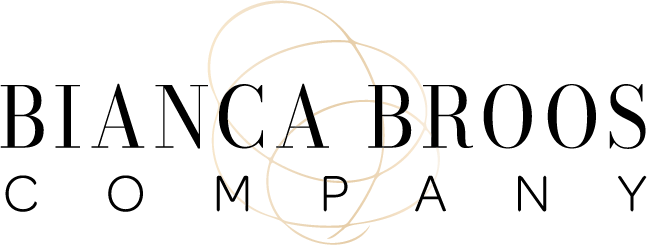You’ve heard it all before—you need a brand. However, taking the right first step can sometimes feel like entering a labyrinth. With the vast array of options available today, it’s easy to feel unsure about how to build your brand.
Whether starting entirely from scratch, making small but impactful refinements, or going in an entirely different direction, all of this falls under branding.
As a Strategic Advisor with nearly two decades of experience, I have guided hundreds of clients through the intricacies of Business Strategy and Brand Development. Let’s shed some light on the benefits of each approach and find what may work best for your goals.
The Difference Between a Corporate Brand and a Personal Brand:
Corporate and personal brands are distinct approaches that serve different purposes and target different audiences.
A corporate brand represents a mid-size to large business entity, encompassing itsproducts, services, values, and identity in the marketplace. It represents the organization’s collective reputation, credibility, and trustworthiness among its stakeholders (clients, consumers, investors, internal partners, board of directors, external strategic partnerships, and team). Corporate brands are built over time with key markers of developing thorough & consistent messaging, visual identity, and customer experiences. The primary function of a corporate brand is to foster brand loyalty, drive sales, and establish a competitive advantage in the market.
A personal brand is a powerful tool that revolves around a small business where the owner is the “face” of the brand or an individual, typically a professional, thought leader or person of influence.It’s a strategic expression of the person’s personality and building a reputation locally and online. Personal brands are cultivated through self-promotion, consistent and engaging content creation, networking, and thought leadership development across various platforms such as social media, articles, press, podcasts, and speaking engagements. Personal Brands enhance career opportunities, attract clients or collaborators, and differentiate oneself in a crowded marketplace. Unlike corporate brands, which are associated with organizations, personal brands are deeply intertwined with an individual’s identity and values, making authenticity, trust, and credibility crucial to success.
I feel like this is a whole other article –
How to know when it’s time to create your brand:
You have a brand – it just might not be the one you want or not all you want it to be. A brand, in its most simple form, is what you are known for.
Engaging in creating your brand starts by evaluating your value proposition and mission statement, how it aligns with where you want to grow, and creating a visual and voice-driven identity to fortify and amplify your brand.
If you’re ready to start something completely new, engaging in the branding process is one of the best steps to set yourself up for success. The markers? Creating reach, resonance, and revenue.
The brand creation process is about rolling up your sleeves with an experienced team ready to craft your digital footprint and identity. Think of your identity as establishing brand values, designing the look and feel of your brand (color scheme, fonts, photography, and logo), and defining brand voice (messaging, target audience, etc.).
Pros:
- Complete creative freedom to shape the brand according to your vision.
- Opportunity to establish a unique identity in your new market.
- Ability to target specific audience segments with precision.
Cons:
- It is a time-consuming process requiring strategic planning and following through on you and the team you hire.
- Higher initial investment compared to rebranding or refreshing an existing brand.
- Risk of failure if the brand identity fails to resonate with the target audience.
Long-Term Benefits of creating a defined brand:
- Strong brand equity built from the ground up.
- Greater control over brand perception and messaging.
- Increased potential for long-lasting customer loyalty and brand recognition.
Is this the right step for you? Ask yourself: (CHECK PRONOUNS – don’t switch from you to we)
- Is there a clear gap in the market that your new brand can fill?
- Do you have the time, resources, and support to build a brand from scratch?
- Are you targeting a distinctly new audience that requires a tailored brand identity?
Understanding the total rebrand:
A rebrand involves a significant overhaul of an existing brand’s identity, often driven by market dynamics shifts, company direction changes, or the need to overhaul an outdated brand image.
A rebrand is a strategic endeavor undertaken by the Business Development, C-Suite, the internal branding/marketing team, and an external, highly experienced vendor. The goal is to overhaul its brand identity, messaging, and visual elements.
Through a rebrand, companies seek to refresh their image, breathe new life into their brand perception, and reignite interest among target audiences. It often involves redesigning logos, updating brand colors, refining messaging, and sometimes changing the company name to reflect its new identity and direction.
Here are a few examples of when a company might engage in a rebrand:
Expanding into New Markets: When a company decides to enter new geographic regions or industry segments, a rebrand may be necessary to ensure alignment with the preferences and expectations of the new target audience. For instance, a mortgage lending company that has a hyper-local focus may be expanding into new states or regions. A rebrand supports them in adapting their image and messaging to resonate with the nuances and consumer preferences in different markets.
Merger or Acquisition: After mergers or acquisitions, companies often undergo a rebrand to reflect the combined entity’s identity and values. This could involve integrating elements from both brands to create a cohesive new identity that communicates unity and strength. For example, when two technology companies merge, they may undergo a rebrand to establish a unified brand identity that signifies the synergy between the two organizations and their shared vision for the future.
Pros:
- Opportunity to breathe new life into a stagnant brand.
- Alignment of brand identity with evolving business objectives.
- Potential for revitalized brand perception and increased market relevance.
Cons:
- Risk of alienating existing customers who are attached to the old brand identity.
- A resource-intensive process requiring careful planning and execution.
- Uncertainty surrounding the success of the rebrand in resonating with the target audience.
Long-Term Benefits of engaging in a rebrand:
- Enhanced brand visibility and recognition.
- Reinforced brand loyalty among existing customers.
- Improved competitive positioning in the market.
Is this the right step for you? Ask yourself:
- Are we experiencing a disconnect between our brand identity and our current business objectives?
- Is our brand perception hindering our growth potential?
- Do we have the internal buy-in and external support necessary for a successful rebrand?
When to engage in a Brand Refresh:
A brand refresh involves strategically adjusting certain aspects of an established brand’s identity while retaining its essence and values.
Unlike a complete rebrand, a brand refresh focuses on updating specific elements to enhance relevance, resonance, and the experience crafted for the consumer. People often pursue this approach to adapt to shifting preferences, stay ahead of evolving trends, or address feedback from their target audience.
Additional examples of when a company might opt for a brand refresh include:
Revamping Visual Identity: A company may refresh its brand by modernizing its visual identity, such as redesigning its logo, updating typography, or refining color palettes. For instance, a retailer renowned for its classic aesthetic might refresh its visual identity by incorporating contemporary design elements to appeal to a younger demographic while maintaining its timeless appeal for existing customers.
Refining Brand Messaging: Brands frequently undergo a refresh to fine-tune their messaging and communication strategies to better resonate with their target audience. This could involve clarifying brand values, adjusting tone of voice, or realigning brand narratives to reflect current market dynamics. For example, a technology company known for its products might refresh its messaging to convey complex concepts in simpler terms, making its products more accessible to a broader audience of consumers.
Pros:
- Cost-effective compared to a full-scale rebranding effort.
- Minimal disruption to existing brand experience and customer relationships.
- Opportunity to adapt to shifting market trends and consumer preferences.
Cons:
- Limited scope for significant changes to brand identity.
- Risk of underwhelming response from customers expecting more substantial updates.
- Challenges in maintaining consistency across refreshed brand elements.
Long-Term Benefits of Engaging in a Brand Refresh:
- Improved brand perception without sacrificing existing brand equity.
- Enhanced relevance and appeal to target audiences.
- Ability to adapt to evolving market dynamics while maintaining brand continuity.
Is this the right step for you? Ask yourself:
- Are our brand elements outdated or no longer resonating with our target audience? Does our brand feel tired or stale?
- Are we looking to modernize our brand without departing from our established identity?
- Can we achieve our branding objectives through incremental changes rather than a complete overhaul?
Whether you’re building a brand from scratch, revamping an existing one, or fine-tuning specific elements, each approach can create long-term results when engaged properly.
By asking the right questions and understanding your business’s unique needs, you can make informed decisions that set your brand on a path to long-term success.
At the Bianca Broos Company, we believe that any of these processes are best engaged with an Agency that understands how impactful the business strategy is to brand success. If you’re curious about our process, results, and services, connect to schedule a complimentary 30-minute intro with our founder, Bianca Broos.





